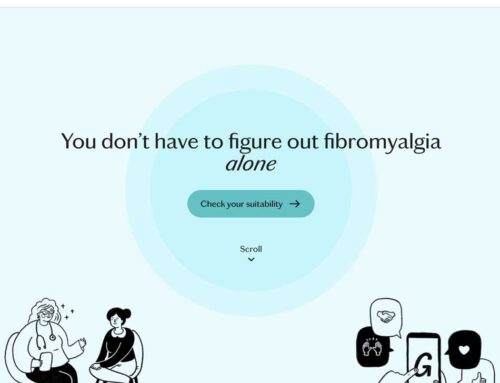
Excerpt from www.pelvicpainrehab.com
February 27, 2013, Posted by Stephanie Prendergast
Part I in the “Demystifying Pudendal Neuralgia” Series
For so many the term “pudendal neuralgia” conveys a frightening and mysterious chronic pain diagnosis. And to be sure, at one time, receiving a diagnosis of pudendal neuralgia, or “PN” as it’s commonly called, was truly terrifying, especially considering that it was against the backdrop of a medical community that didn’t have answers and an online community rife with misinformation.
However, “pudendal neuralgia” literally means “shooting, stabbing pain along the distribution of the pudendal nerve.” So in reality, pudendal neuralgia is not a dark, mysterious diagnosis, it’s simply pain anywhere along the nerve that innervates the pelvic floor.
While progress has been made in the treatment of PN over the past decade, there continues to be a tremendous amount of confusion swirling around the diagnosis, not the least of which is the massive confusion surrounding the difference between the diagnosis of PN versus the diagnosis of PNE and what is the appropriate course of treatment for each.
In this post, I’m going to tackle those two points. But, that’s not the last you’ll hear about PN on this blog. It’s a topic I’ve spent my career embroiled in, and it’s one that I’m passionate about.
So this post marks the beginning of what will be a series on PN. Further posts in the series will tackle PT as a treatment for PN, the PNE decompression surgery, the current use of the “Three Tesla MRI” as a test for PNE, and the role of central sensitization in PN.
A Tortuous Course
Before I get into PN versus PNE, I want to first give you a brief explanation of the physiology of the pudendal nerve and the diagnosis of PN.
The pudendal nerve is a large nerve that arises from the S2, S3, and S4 nerve roots in the sacrum, and divides into three branches—the inferior rectal nerve, the perineal branch, and the dorsal clitoral/penile branch. The nerve travels a tortuous course through the pelvis to innervate:
• the majority of the pelvic floor muscles,
• the perineum,
• the perianal area,
• the distal third of the urethra
• part of the anal canal
• the skin of the vulva, the clitoris, portions of the labia in women,
• and the penis and scrotum in men.
The pudendal nerve travels a torturous course through the pelvis.
Patients with PN can have tingling, stabbing, and/or shooting pain anywhere in the territory of the nerve. Symptoms include vulvar or penile pain, perineal pain, anal pain, clitoral pain, and pain at the ischial tuberosities as well as pain with bowel movements, urination, and orgasm.
One of the things that make the pudendal nerve so unusual is that it doesn’t just have motor and sensory fibers like other nerves that exist outside of the brain and spinal cord, it also has autonomic fibers.
Here’s the significance of this unusual quality: Motor and sensory fibers innervate somatic structures, like muscles, giving us voluntary control over them. Whereas structures innervated by autonomic fibers are not under our voluntary control. The heart, lungs, and GI tract are examples of such structures.
So it’s thanks to the autonomic fibers of the pudendal nerve that our pelvic floor muscles always maintain a degree of tone, which enables us to remain continent. But we do have the ability to override the tone in our pelvic floor muscles and further contract or relax them when we wish. So, the pudendal nerve is only partially under autonomic control.
What is the relevance of this to our discussion of PN symptoms? Well, it’s because of these autonomic fibers that patients with PN can experience disturbing feelings of sympathetic upregulation when their pain spikes. Symptoms such as:
• an increase in heart rate,
• a decrease in the mobility of the large intestines,
• a constriction of blood vessels,
• pupil dilation,
• perspiration,
• a rise in blood pressure
• goosebumps, and
• sweating, agitation, and anxiety.
I’ve had many patients that have reported these symptoms. Many have told me that they thought they were going crazy or were having an anxiety attack at those times. So it’s important that patients are aware of this feature of the nerve. They’re not crazy! And with the proper treatment, these symptoms can be stopped.
The Pudendal Nerve in Men
PN vs.PNE
In order to best understand the differences between PN and PNE, you need to have a sense of the history of both diagnoses.
I began working with pelvic pain patients in 2001. Back then, nearly every patient I saw had been suffering for at least five years, often longer, had seen an average of ten other providers, and was in tremendous pain. Across the board, these patients had been dismissed, misdiagnosed, and mistreated.
However, when I came into the pelvic pain picture, a shift was happening in the medical community. It was sinking in that pelvic pain was a valid health issue that needed to be addressed. “PN,” “vulvodynia,” and “IC” were all diagnoses that had individually made their way onto the scene, but collectively they were now being handed down to patients with more frequency. So, for instance, a patient who had been told her symptoms were “all in her head” was now given a diagnosis of “PN.”
What did it mean to be diagnosed with PN back then?
Because this was a patient demographic that had been mistreated for so long, for the majority of these patients, their pain had become ingrained in their nervous systems. So as a result, the treatments that were administered, such as nerve blocks, medication and PT were not successful because they were only aimed at the periphery of the patients’ pain, not the peripheral and central nervous systems. Plus, there wasn’t the same level of understanding of the myofascial musculoskeletal component of pelvic pain or the need for a multidisciplinary approach to treatment that there is today.
Then sometime around 2003, pudendal nerve entrapment or “PNE” became the diagnosis du jour. PNE was first mentioned in 1988, but became popular as a diagnosis around 2003, most likely because of chat rooms about the condition on the Internet.
PNE is most commonly defined as a physiological entrapment of the pudendal nerve that requires surgical release. While “PNE” can certainly cause PN, it’s far from the only cause. However, one of the symptoms of PNE at the time was “pain with sitting.” Therefore, anyone who had pain with sitting, all of a sudden had nerve entrapment. Plus, the terms “PN” and “PNE” were suddenly becoming used interchangeably. So too often, as soon as there was the inkling that the pudendal nerve was involved in a patient’s pain, he or she was told entrapment was the cause and three nerve blocks and decompression surgery was the answer.
Clearly, providers were systemically over diagnosing patients with PNE. Intentions were in the right place. Providers wanted to successfully diagnose and treat their patients, and patients, for their part, wanted to get better.
PNE had emerged in the literature as a diagnosis in the 1980s when almost nothing was known about myofascial pain and chronic pain syndromes in general. Surgeons and anesthesiologists in Europe were the first ones to take an interest in PNE, and as a result the treatment methods that were developed focused on nerve blocks and decompression surgery.
Electrophysiological testing also fell within the bailiwick of this particular group of physicians, so these are the testing methods that were used to determine PN/PNE. (Remember, for a period of time the two became muddled together.) So if PN/PNE was suspected, a pudendal nerve terminal motor latency test or a “PNTMLT”, which is a nerve conduction velocity test was administered to “verify” the diagnosis. Next, patients were given three nerve blocks and medication.
For its part, A PNTMLT is a test that measures nerve conduction velocity times. The test is administered by inserting a small needle into the ventral external anal sphincter (the portion innervated by the perineal branch of the pudendal nerve). The doctor than inserts a gloved finger with an electrode into the anus and delivers a charge to the perineal branch of the pudendal nerve at the ischial spine. The recording needle electrode captures the amount of time it takes for the signal to get from the ischial spine to the sphincter. If the time is “delayed” the test is considered to be positive. This test is incredibly painful and can cause a flare that can last for weeks. Plus, at the time of testing, the secondary muscle spasm associated with the pain of the test often makes its readings unattainable.
Historically, with or without the results of a PNTMLT, the next step to treating PN/PNE was to administer nerve blocks and medications. The nerve blocks were painful and provided about four hours of relief at best, and the medication either did not help or caused side effects that were worse than the pain itself.
When that protocol failed (and it almost always did for the above mentioned reasons), the next step on the treatment train was decompression surgery. Patients were told the longer they waited to get the surgery the worse their pain would become. To further complicate matters, for a time, the only surgeons who did the surgery were in France. So patients were traveling to France en masse to have the surgery done.
Fast forward to the present day. Today there’s been a great deal of progress made in our understanding of PN and PNE.
And one of the biggest discoveries is that there is no way to know whether a patient has pudendal nerve entrapment prior to operating. I’m going to say that again because I think it bears repeating: There is no way to determine whether or not someone has pudendal nerve entrapment prior to surgery.
And in fact, the only way to know with any certainty whether there was indeed an entrapment post-surgery is a post-operative finding of pain relief. This is according to research conducted by neurosurgeon, Prof. Roger Robert, and neurologist and urologist, Dr. J.J. Labat, the team of French surgeons that developed the initial surgical technique for the PNE decompression surgery.
No Way to Know
By 2008, several groups of leading PN experts conducted studies and discredited the electrophysiological tests as diagnostic tools of PN/PNE. (A great paper that summarizes the numerous studies that led to the invalidation of the tests is “What is the Place of ENMG Studies in the Diagnosis and Management of Pudendal Neuralgia Related to an Entrapment Syndrome?” by Lefaucher, J.P., Labat, J.J., Amerenco, G., et al.)
In early days when the medical community was working to make heads or tails of a PN/PNE diagnosis, it seemed logical to apply the testing to the diagnosis. After all, it was the protocol used in other parts of the body for neuralgia and entrapment. So why wouldn’t it work for the pudendal nerve? The reason is that pudendal neuralgia and PNE is a sensory problem – pain – and this test measures the speed of motor fibers. We can not correlate the nerve conduction speeds of pain.
There are surgeons who say they believe that they can see entrapment when they open the patient up, that they can see nerves that are grey and look frayed; however, there’s not that much correlation between the levels of pain the patient has, and the doctor’s visual. Plus, surgeons are not operating on asymptomatic individuals, so we don’t know if the asymptomatic population looks the same anatomically. Therefore, it’s a big assumption to say you can see entrapment when we don’t know what “normal” is.
Today PN patients are having MRIs done. (More details on this in the fourth post in this series.) For their part, MRIs can show that there is swelling around the nerve. However, issues other than entrapment, can cause swelling, so again, this is not a appropriate diagnostic test for PNE.
So although patients continue to have these tests done and even to rely on them for proof of entrapment and PN, the fact of the matter is that all the accepted thinking in the field, even by the surgeons who perform the decompression surgery, is that the tests do not confirm either entrapment or pudendal neuralgia.
The History is the Key
The most important factor in deciding whether or not a patient has a possible entrapment is the patient’s history. In fact, this is the thinking espoused by one of the country’s leading PN physicians, Dr. Michael Hibner.
For example, if a patient who had no pelvic pain, had pelvic reconstructive surgery, and woke up from the surgery with shooting, stabbing vaginal pain, then that is likely an entrapment that probably needs to be surgically released. However, if a patient has had seven yeast infections in a row, and develops vaginal burning, it’s not reasonable to conclude that a ligament is entrapping the nerve and causing those symptoms. Connective tissue dysfunction and hypertonic muscles are more likely the cause.
So before a patient, or a surgeon for that matter, goes forward with a nerve decompression surgery, they need to be sure that the patient’s history makes sense.
Some in the medical community, myself included, believe that there are only two hard and fast situations where a nerve will likely be entrapped. One is an anatomical deviation that the patient is born with, and the other is as a result of a problematic pelvic surgery, such as a hysterectomy or a pelvic reconstructive surgery to correct a cystocele, rectocele or prolapse. If a patient has a slow, insidious onset of pain that eventually becomes burning, then that’s probably not entrapment but rather myofascial pelvic pain that is affecting the pudendal nerve.
When PN Plays a Role
By this point, I hope that I have made it clear that the diagnoses of PN and PNE are not interchangeable and that there are no tests that can show if the pudendal nerve is entrapped or that a patient even has PN.
So then how do you know if you have PN?
Today, a diagnosis of PN is a clinical diagnosis, which means the diagnosis is based on signs, symptoms and medical history of the patient rather than on laboratory examination or medical imaging. Generally, PN symptoms are said to include burning, stabbing and/or shooting pain anywhere in the territory of the nerve.
Plus, a provider can examine the patient’s pelvic floor internally via the rectum or the vagina and upon examination test the pudendal nerve by performing a technique called a “Tinel’s Sign. A Tinel’s Sign is a way to detect irritated nerves. It is performed by lightly tapping over the nerve to elicit a sensation of tingling or “pins and needles” in the distribution of the nerve.
As you may have already realized, many of these symptoms overlap with symptoms of other pelvic floor problems. This can make it difficult to arrive at a definitive, iron-clad diagnosis of PN.
However, at the end of the day, as is the case with most pelvic pain syndromes, not being able to have a written-in-stone diagnosis isn’t a big loss because with pelvic pain, the diagnosis doesn’t dictate a treatment protocol. In fact, there is no standard, one-size-fits-all protocol for treating PN. Not to mention the fact that more often than not, there is going to be a combination of causes. So at the end of the day, if you think about it, “pudendal neuralgia” is more of a symptom than a diagnosis, anyway.
Remember, “pudendal neuralgia” means pain along the distribution of the pudendal nerve. So saying “I have pudendal neuralgia” is analogous to saying “I have burning or stabbing clitoral, vaginal, or penile pain.”
So when it comes to pudendal neuralgia, the most important course of action is to figure out the underlying causes, and then figure out what needs to be done to treat them.
PN Treatment Today
In wrapping up this post, after having spent so much time talking about what not to do when it comes to PN, I’d like to spend some time discussing the actions I do recommend for patients when pudendal neuralgia is suspected. Thankfully, today patients have more reasonable, comprehensive treatment options. The best course of action is for them to approach their treatment with a multidisciplinary team approach in mind.
PT
An important player in on a multidisciplinary team to treat PN is a pelvic floor physical therapist.
At the end of the day, pudendal neuralgia is a myofascial pain syndrome that affects the nerve that innervates the pelvic floor musculature and viscera, so a PT who is expert at treating the pelvic floor should be able to address why that nerve is irritated.
However, many patients are afraid that PT will further irritate their pudendal nerve. Perhaps they’ve read on an online message board that this has happened to others with similar symptoms. Here’s the deal: PTs do not learn about treating the pelvic floor in PT school let alone how to palpate the pudendal nerve. So if a patient sees a PT that does not know their way around the pudendal nerve than yes, that PT could irritate their nerve. That’s why it’s important for the patient to do his or her homework and make sure the PT has proper level of expertise to treat them. (Our next post will delve much more deeply into PT for PN.)
Medication
There are a handful of medications that are helpful for PN. One group is SNRIs, which are aimed at calming the central nervous system, such as Cymbalta. Other anticonvulsant drugs such as Lyrica, and Neurontin are also often top choices in this group.
Another group includes tricyclic antidepressants, such as amitriptyline, nortriptyline and desiprimine.
When working with meds, patients need to realize that they must get to the proper therapeutic dose for the proper length of time before they will experience a medication’s effectiveness. In addition, just because the medication doesn’t take away all of their pain, this doesn’t mean it is not having a therapeutic effect.
Nerve Blocks
In the past, I would have said that pudendal nerve blocks are not therapeutic. However, I believe the reason they did not work for my patients in the past is that the patients that were getting them early most likely had central sensitization due to the severity and the chronicity of their pain, and therefore any treatment directed at the periphery, whether a block, medication, or PT was not going to be as effective as it could be.
However, today, patients are getting diagnosed much earlier in the game; therefore, I believe all of the treatments aimed at the periphery, such as nerve blocks, are having higher success rates.
That said, nerve blocks should never be a patient’s only course of treatment. They are not going to be a silver bullet cure-all. Much of the time, the lasting effect on the patient’s pain is very minimal. If there is a long term effect, it will be that once the anesthetic wears off, the patient will have a little less sensitivity.
So bottom line: my advice is that if a patient has access to a physician in their community who has a reputation as being an expert at administering nerve blocks, and their insurance covers the block, then they should give it a try with the expectation that at best it may help and at worst it may cause a temporary flare. However, if the patient has to travel to another state and spend thousands of dollars to get it done, the possible benefit is not likely worth the travel and expense.
Botox for PN
Botox is very good for muscle hypertonis, which is associated with PN, so if a patient (typically with the direction of their PT), is suspicious that the obterator internus is a large part of their pain/nerve irritation, then Botox may make sense.
A good test run is to have the physician first inject lidocaine into the area to see if there is a positive effect. If some or all of the patient’s pain is reduced or eliminated during the first hour after the injection it may make sense to then inject Botox. One reason for this approach is that Botox is quite expensive, so it’s a good idea to make sure it’s going to be injected into an area that is relevant.
I mention the obturator specifically because that is a muscle that is commonly involved in PN because part of the Alcock’s Canal is made up of the aponeurosis of the obterator internus and so if there is compression in that canal, decreasing the hypertonis will take some of the pressure off of the nerve in the same way that decompression surgery would. So in fact, in such a situation where the nerve is compressed, either Botox or manual therapy can serve to free it up instead of surgery.
I hope this post has fulfilled my goal of shedding light on a few areas of the PN diagnosis that continue to cause confusion. It’s a complicated diagnosis that thankfully is beginning to make more sense, but there’s still a lot of work to do. Speaking of, stay tuned for the next post in our pudendal neuralgia series, which will focus on the role of PT for PN. Be sure and subscribe to the blog if you haven’t already, so you’ll get the next in the series as soon as it’s posted.
In the meantime, if you have any questions or comments, please leave them in the box below. I look forward to hearing from you.
All my best,
Stephanie
About Stephanie Prendergast: Stephanie is the co-founder of the Pelvic Health and Rehabilitation Center, president of the International Pelvic Pain Society, and an organizing member of The World Congress on Abdominal and Pelvic Pain. She has written extensively on the topic of pudendal neuralgia and teaches a course titled “Demystifying Pudendal Neuralgia: A Physical Therapist’s Approach” for physical therapists.











Thankyou for quick reply
And sharing your story
I diagnosed myself 10 months ago and was correct with bi-lateral entrapment post surgery after 6 specialists, 10 tests and being treated like I am a fool.
Your story help my resolve to continue to seek support and treatment even if its more years of all this post-surgery mess.
I really can’t offer advice. What works for me, may not work for someone else, this damn issue is unique to us all.
I can only share my story and as you may have read, I found relief with the neuro stim implants. My pain specialists are: https://painspecialistsaustralia.com.au/
There are some support groups on Fb but I haven’t been part of them for years so again, I’m sorry I can’t help.
I need help with PNE advice from a desperate Aussie
Doctor refuses to consider decompression/entrapment surgery just in case the surgery makes it worse.
My thinking is I am in pain now so may as well try to ease the level of pain, your thoughts?
Also no choice in doctors in Australia who are trained to try and do the operation
So isolated and no one knows what it is like to live with this unrelenting nerve pain
Help with a on-line support group please
Much appreciated
Soula,,Thank you for keeping in contact, and I am thrilled that this article made it to you and your site. By far, when I found it, it was the most significant and informative reference to this impossible illness.I fell the pain of everyone that has ever suffered this type of pain, and I sympathize with those who were blown off as being head cases, and not taken seriously. My salvation/discovery of what was actually wrong with me coincided with the death of my wife’s younger sister from Polycystic Kidney Diseases, a horrible illness that has wiped out most of my wife’s family.The diagnosis alone took me from MD to New Hampshire to see an OBGYN specialist- YES me a man. He told me 40% of his patients were from around the country, and that same day, The Anaethesiologist that performed the targeted PN Block could not tell me how many he had done. After 3 trips to NH and pending knee replacement surgery, an angel of a woman I had been counseling found a Dr in Virginia that did this PN block- this after my inability to get a flight during Thanksgiving. Sadly, I do not know her name or how to reach her, BUT she literally saved my life. This wonderful Radiologist that ran this pain center squeezed me in 2 daqs prior to my full knee replacement.,allowing me to fully rehab the knee.
In all, I received 6 PN Blocks, the last 3 by this Virginia Radiologist, who used a CT rather then Flouro for more accurate needle placement..While I still experience symptoms, I have not had a block for 3 years now. While still disabled, and this year having both lumbar and cervical fusion surgeries, I am alive, still fighting,and making plans to take a vacation with my wife- the first one since 2007. We have since moved to Delaware, a wonderful place to live, but sadly lacking in Doctors. To those of you still suffering, YOU MUST BE YOUR OWN ADVOCATE! DO NOT LET ANY DR TREAT YOU LIKE A JERK, as so many of them do. I would have jumped off the Chesapeake Bay Bridge if not for finding my own diagnosis aqnd travelling to NH for diagnosis and treatment. To you Soula, may god bless you with better health and any good luck and happiness that is possible! You are the ultimate trooper, and to those of us that suffer from this horrific condition, our savior !
You must contact the author personally or you are infringing upon her copyright!
No that is not correct, you must have permission from the author, otherwise it is a copyright infringement!
I’ve actually contacted the author and the owners of the website to see if I can create a post referencing their website but haven’t heard yet. As far as my understanding of public posts is, you can repost as long as the author is referenced.
Brilliant article: concise and accessible to the layman or therapist. Can I repost it Soula?